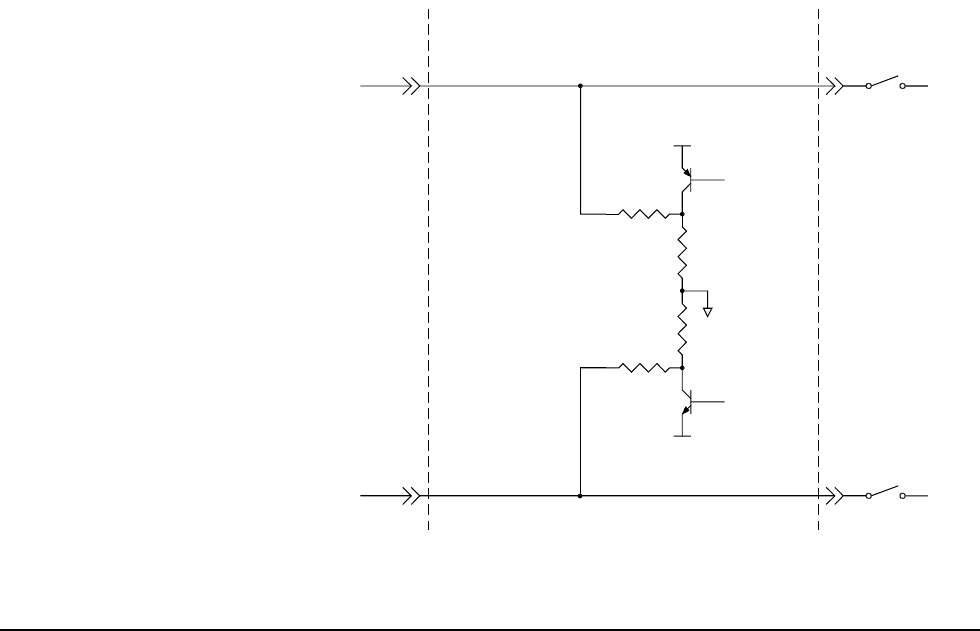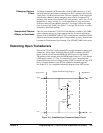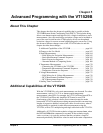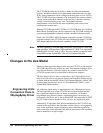
Programming the VT1422A for Data Acquisition and Control 155Chapter 4
Changing Gains or
Filters
To change a channel’s SCP setup after a CAL:TARE operation, a *CAL?
operation must be performed to generate new DAC constants and reset the
"range floor" for the stored tare value. The tare capability of the range/gain
setup that the channel is being changed to must also be considered. For
instance, if the actual offset present is 0.6 volts and was "tared" for a 4 volt
range/Gain x1 setup, moving to a 1 volt range/Gain x1 setup will return
Overload values for that channel since the 1 volt range is below the range
floor as set by CAL:TARE. See Table 7-1 on page 294 for more on values
returned for Overload readings.
Unexpected Channel
Offsets or Overloads
This can occur when the VT1422A’s Flash Memory contains CAL:TARE
offset constants that are no longer appropriate for its current application.
Execute CAL:TARE:RESET then *CAL? to reset the tare constants in RAM.
Measure the affected channels again. If the problems go away, then the tare
constants in Flash memory by executing CAL:STORE TARE can be reset.
Detecting Open Transducers
Most of the VT1422A’s analog input SCPs provide a method to detect open
transducers. When Open Transducer Detect (OTD) is enabled, the SCP
injects a small current into the HIGH and LOW input of each channel.
The polarity of the current pulls the HIGH inputs toward +17 volts and the
LOW inputs towards -17 volts. If a transducer is open, measuring that
channel will return an over-voltage reading. OTD is available on a per SCP
basis. All eight channels of an SCP are enabled or disabled together.
See Figure 4-11 for a simplified schematic diagram of the OTD circuit.
Signal Conditioning Plug-on
Multiplexer
Signal Input
High
Low
100M
-17V
3K
Gnd.
3K
100M
+17V
High
Low
Figure 4-11. Simplified Open Transducer Detect Circuit


















